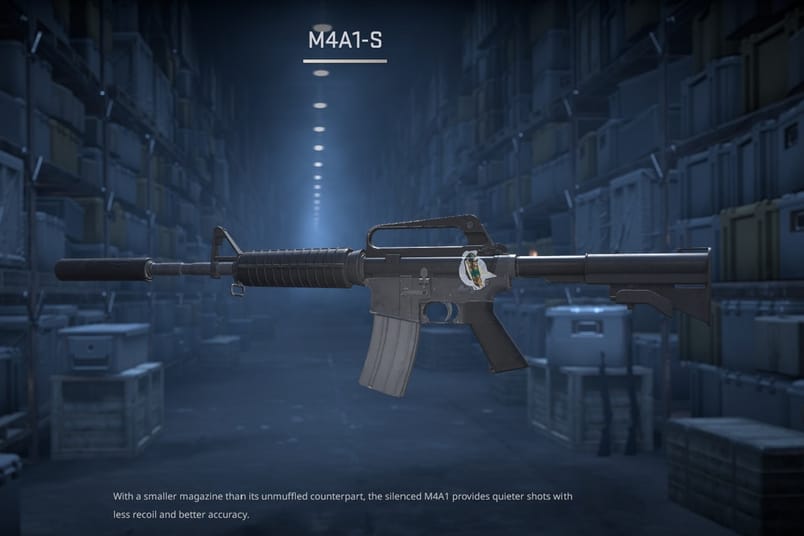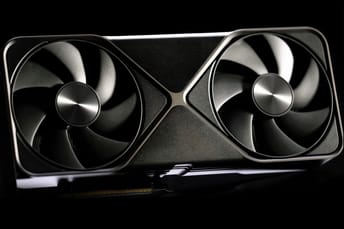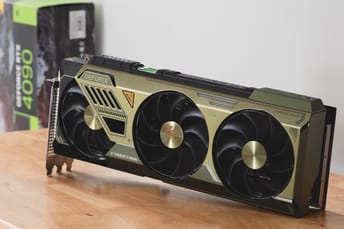
Success of Steam’s Cosmetics Economy: Why Skins Beat NFTs in Gaming
|
|
Real-value digital property is older than blockchains, even in video games: World of Warcraft mounts, EVE Online ships, or Second Life land—all carried tangible merit long before the appearance of NFTs. The difference, then and now, is utility. A Counter-Strike 2 AK-47 skin is visible every round, in every kill-cam, and on every stream. By contrast, most NFTs live in cold wallets or sometimes in random forums or Twitter (now X) avatars.
Among all the innovations in digital item trading within computer games, the Steam Community Market is a real prodigy. According to 2025 data, the total market cap for CS2 skins (only for CS2 skins, not the entire market!) stands at 4+ billion dollars now. So, let’s examine the rise of this marketplace and the reasons behind its appearance, explore its features, and occasionally draw parallels with the NFT market. We’ll also briefly look at adjacent topics of real-money trading (RMT) in games, and Web3 games.
Okay, and before we start, here’s a short disclaimer. Opening a CS2 case is literally a slot machine spin. Third-party roulette sites that let you wager your skins multiply the risk due to the possibility of a scam. This article is for educational purposes only. Nothing here is financial advice. I do not encourage lootbox spending or speculative trading. Don’t @ me when you get another blue.

Team Fortress 2: Hats That Changed the Game
When Team Fortress 2 shipped in 2007 within the Orange Box, its fun and addictive class-based gameplay was the draw; nobody imagined that a purely cosmetic hat would become the game’s symbol a few years later. In May 2009, this changed. Valve’s “Sniper vs. Spy” update added 9 hats (1 per class).
In-game items were distributed through random drops based on the amount of time a player spent on the server, with no guarantees of getting anything. This system led to the rise of idle servers, where players would stay AFK just to farm items (patched by Valve years later).
As a bonus, whenever a player received any item drop, a message would appear in the chat for everyone to see who got what. Hats were extremely rare, turning them into coveted status symbols; if someone was lucky enough to score a hat, the whole server would cheer. This established the first two core principles: time equals value, vanity equals status.
Crafting and trading
In December 2009, the “WAR!” update introduced crafting. Let’s skip the boring details, unwanted items could be smelted into resources, which could then be processed further; at the end of the line, players would receive Refined Metal, from which hats could be crafted.
In September 2010, the “Mann-conomy” update added a whole new in-game economy. Valve opened the Mann Co. Store, began dropping locked lootboxes (called crates) for free, and sold the matching keys for 2.50$. Valve didn’t invent lootboxes, but they definitely pioneered and popularized their use in mainstream gaming.
The same patch added in-game trading between players, a big bunch of new items, and an item set system that granted gameplay bonuses and debuffs when matching items were worn together. All sets required specific hats to work, and those hats were locked away in chests. For example, the Saharan Spy set muffled the Spy’s decloak sound, bordering on pay-to-win.
Because some hats could be crafted from Refined Metal (which is usually referred to as “ref” by players, btw), it became a natural pricing unit. Keys were tradable but not craftable, giving them a floor price in real money. The community’s barter was built around keys and ref. That abstraction normalised trading without real money and kept most transactions inside the game.

Going free-to-play
In June 2011, the “Über” update switched TF2 to free-to-play (F2P), but with a twist. Free players could receive only limited item drops (no hats!) until they spent any money in the in-game shop, which would then upgrade them to Premium status. Newcomers poured in, all simultaneously aware that hats existed but unable to get them through the restricted drop pool—perfect fuel for the in-game economy. Item demand exploded, and the cosmetic economy continued to take its final shape.
In September 2011, Steam’s cross-game trading system left beta. You could finally trade outside of the game through Steam. Gifts for games could be bartered for TF2 items; nothing remotely close to this existed on PC at the time. This move bridged item economies across games and set the stage for the Steam Community Market.
As a side note, Valve removed set gameplay bonuses in July 2013, relegating hats back to pure vanity. A nerf to my Familiar Fez (I spent around 40$ to get it for that nasty silent decloak)—and a right decision against pay-to-win creep to keep the game healthy.

Crossovers
Valve periodically adds cosmetics themed around other games (Payday masks, L4D hats, Alien Swarm parasite hat, exclusive items from Poker Night, and many more). These items promote different games, effectively turning your character into a walking billboard. None of these are NFTs, yet all grant the same social status and bragging rights. An item from a crossover wasn’t just a fashion element—it was a mark of being part of a specific game or event, instantly recognized by others on the server.

Life Before the Official Marketplace
Before the Steam Community Market existed, trading items was akin to the Wild West. Players used trading servers in-game, special sites, and fan forums. Inventory-tracking tools popped up (backpack trackers), which would later become the go-to price checkers. Organizing a single exchange often meant a lot of time spent looking for an item, haggling, sending screenshots, or refreshing forum threads to see if your own offer caught someone’s eye.
Steam profile comments became a community reputation system. Spammy “+rep” indicated a trustworthy trader—or at least someone who hadn’t run off with keys yet. Middlemen—well-known traders with solid reputations—acted as neutral third parties, holding items in escrow for both sides. These middlemen sometimes charged a commission in ref or keys for their services.
Money flowed—scams appeared. Common schemes were:
- Quickly switching items before finalizing the trade.
- Running off with prepayment (items/keys/ref).
- Fake middleman.
- Reversing charges (in case of RMT).
- And many more.
Valve’s relatively small support system became overloaded. Thousands of tickets poured in from victims asking for justice. But Valve made it clear: all trades were final—buyer beware. This policy, while harsh, was meant to avoid becoming a 24/7 trading referee.
By 2012, it was clear that the trading scene was too big and volatile at the same time—frictions, scams, little to no safety. The stage was set for a platform-wide solution.
The Steam Community Market
In December 2012, Valve quietly shipped a public beta for the market, initially supporting TF2 items and trading cards. Suddenly, players could list and buy items safely and instantly—no more hassle trying to find an item you need and a trader, and no more worrying about scams.
For the first time, item prices became visible and standardized for everyone on the platform. But trading came with a fee: 5% for the game’s publisher and a 10% cut for Valve. An overwhelming number of listings appeared in the first 24 hours, proving the demand.
Market fees directly funded new anti-fraud measures. Valve rolled out two-factor confirmations, anti-bot measures, trade-hold delays, and the Mobile Authenticator—everything for the safety of the users. And the 5% cut for publishers incentivized more developers to add trading cards and items to their games.
For traders and collectors, the Market was not just a convenience feature but a game-changer. Prices stabilized, scams plummeted, and the item economy finally had a safe home. Third-party sites evolved to complement the official marketplace, adding analytics, trading bots, and new tools for everyone to use. The system was ready for scaling, which came in handy with CS:GO (now CS2) vanity items later.
Counter-Strike: Rise of Digital Drip
In August 2013, the “Arms Deal” update changed Counter-Strike and the digital item economy. Every weapon was more than just a simple reskin—each skin now came with three defining features:
- Rarity tier. From “Consumer Grade” to “Covert”, rarity determined both prestige and value.
- Wear level. Ranging from “Factory New” to “Battle-Scarred”, different paint conditions further impacted skin price and desirability.
- Unique pattern seed. Even two identical skins could look noticeably different, thanks to unique random pattern seeds. Sounds a bit like NFTs, right?
Knives became another status symbol, occupying the rarest tier—owning one was a luxury. Stickers let players customize their weapons with unique designs, and the community turned this into a creative challenge. AK-47 The Empress is the most famous example, players used stickers like Crown (Foil) to highlight the skin’s gold details.
Esports broadcasts took it further, now viewers could see the exact skin an esports athlete was wielding in live events. Valve capitalized on this by introducing autograph stickers—digital signatures from pro players that could be applied to weapons. Monetization for both professional players and Valve, free advertising for the skins, growing elitist sense of prestige around specific items—all of this helped fuel the marketplace’s growth even more.

Consistent content
Valve kept the momentum going, releasing a new series of cases every half a year, consistently injecting new skins into the game and keeping interest levels high. Every new collection or event meant a fresh supply of skins to chase.
Steam Workshop opened the door to the community. Creators could submit their own designs and (if selected) receive a revenue share every time someone gets their skin from lootboxes (for example, AWP Asiimov and AK-47 Vulcan). This elevated skin design to a form of digital art that anyone could participate in.
StatTrak counters were added. It’s a personalized version of a skin that tracks kills made with that weapon (only by the player who actually owns the skin on Steam, not by anyone who just picks it up in a match). Yet another NFT-like thing.
Years later, analysts estimated that the annual market turnover for CS exceeded 1 billion dollars. The ecosystem grew without venture capital investments, fueled only by the influx of new players and their desire for drip. Investment was never the intention behind the market’s creation, nor the driving force behind its growth.

NFT Boom vs Steam’s Cosmetic Item Economy
Non-fungible tokens first appeared in Bitcoin experiments around 2014, hit public consciousness in 2017 (CryptoPunks and CryptoKitties on Ethereum), and skyrocketed in 2021. That year, total sales exploded over 17 billion dollars—up from around 82 million in 2020—on the promise that owning a JPEG made you an investor. But by 2023, that figure had dropped back below 430 million dollars and has been decreasing ever since.
Decentralization promised freedom, but created a vacuum of responsibility. Once a rug-pull happens, there’s no help desk to call. Combined with crypto’s wild price swings, NFTs started acting more like risky stocks than actual collectibles.
Liquidity and audience
Valve reported 132 million active monthly players at the end of 2021; anything you list on the market appears in front of a standing army of buyers, and most low-tier items sell within seconds. Every match in CS or TF2 is a live ad: you see a cool skin, open the market, and buy it without leaving the game.
NFT platforms, by contrast, run outside any gameplay loop; demand is episodic, mostly driven by influencers.
Utility beats pure hype
Practical consumer value is the reason CS skins survived while NFTs failed. Equip a rare M4A1 skin—the entire server sees it every match (plus viewers, in case of streaming). The driver of value and demand is visibility, not the hope of flipping it later.
Most NFTs, at best, are social-media avatars—amenities that matter far less once floor prices start falling. Game cosmetics remain relevant as long as the games they are used in are alive, while the NFT is mostly based on investment expectations. And if you decide to stop playing a particular game, you can simply cash out by selling the skins you no longer need.

Trust and security
Valve’s security stack looks boring—mobile authenticators, trade-hold timers, support tickets—but boring works, while Web3 offers no safety nets. For a mass user, a controlled, centralized system willing to reverse fraud is simply more practical.
Weak Points of the Steam Model
- You can’t withdraw anything—funds are trapped in your Steam Wallet.
- Valve can freeze an account (and every item in it) for TOS violations—ownership is enforced by the platform.
- Compared to blockchain, the closed database hides transaction transparency.
- Skin demand is tied to a game’s life cycle.
Most users accept those trade-offs for the comfort of security features and actual working support. Honestly—it’s perfectly reasonable.
Quick Note on RMT and Web3 Games
The next level of in-game item value is real-money trading (RMT) for rare drops (selling Diablo legendaries, PoE divines, or Tarkov lab keys [now fixed, but still’s good example] outside the game). This kind of trading is prohibited almost everywhere, comes with some risks, and can easily lead to account bans (usually for sellers, but buyers are in the danger zone too).
Web3 games (Axie Infinity as a famous example) attempted to formalize RMT with blockchain-based play-to-earn systems. These games saw rapid early growth, but most collapsed when token values dropped and new players stopped joining.

Summary
An “outdated” model that works better than anything else
Steam’s economy turns 13 this year. It runs on a closed database, archaic by Web3 standards—yet it processes millions of micro-transactions daily without rug-pulls or other problems that plagued the NFT sector. Valve’s walled garden isn’t perfect by any means, but it proves that these systems are better when they offer tangible merit (and when a trusted platform is there to enforce the rules).
Digital ownership works fine without blockchain, as long as it’s tied to real value.



